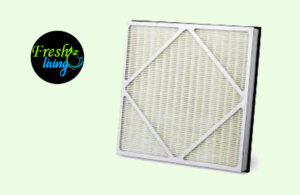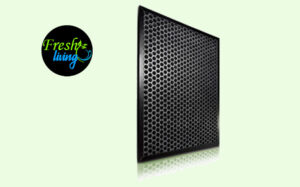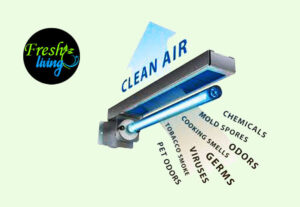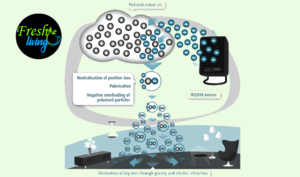
Table of Contents
The most widely used Air Purification Technologies and how they works ?
In this Article we will learn The most widely used Air Purification Technologies and how they works ? Air pollution is a growing environmental concern. Industrial development, deforestation and urbanization have caused air quality across the globe to plummet to dangerous levels. Polluted air affects human and other life forms, and alters the fragile balance of the ecosystem. It induces global warming, ozone depletion, acid rain and extinction of species.
A recent report published by the World Health Organization (WHO) stated that every year, an estimated 7 million die due to air pollution-related causes. In India alone, in 2016, around 1.5 million people perished due to the effects of air pollution.
Another 2016 report by the WHO revealed that 14 of the 15 most polluted cities in the world based on PM 2.5 concentration were in India, with Kanpur taking the lead, followed by Faridabad, Varanasi, Gaya, Patna and New Delhi, in that order.
In such a scenario with deadly levels of air pollution choking our cities, it is absolutely essential to ensure the air in our homes is at least clean and respirable. This is where air purifiers enter the picture. Air purifiers help remove impurities and harmful pathogens from indoor air. They play a critical role in eliminating pollutants like fine particulate matter, aerosols, bacteria, fungal spores, viruses, pet hair and dander, pollen and volatile organic compounds (VOC).

Air purifiers use advanced technology to remove pollutants from the air. Some of the leading techniques include HEPA filters, activated carbon filters, ultra-violet radiation, ionization and ozone generators. Most modern air purifiers use a combination of two technologies. This is mainly because a single mechanism cannot remove all the impurities present in the air. It often takes two techniques to fully rid the air of contaminants.
HEPA, which stands for High Efficiency Particulate Air, is the most widely used technology in air purification. It is highly effective in eliminating harmful microbes and particulate matter.
Activated carbon, another method used to clean the air, is good at removing VOCs and bad odors.
UV light purifiers incinerate and destroy microorganisms floating in the air. They make air pass through a lamp or rod emitting UV-C radiation which burns bacteria and mold spores.
Ionization is used to generate negatively charged gas ions which attract the air-borne particles and prevents them from entering our bodies through respiration. Ionization does not kill the germs but rather takes them out of the air by making the particle-gas ion structure stick to walls, ceiling and floors from where they can be removed through vacuuming.
Purifiers that use ozone are meant for commercial use only. Ozone is used in repair and restoration of buildings destroyed by flood and fire. While HEPA, activated carbon, UV light and ionizers can be used in homes and offices, ozone generators are only suited for industrial use and in certain cases, hospitals.
HEPA technology
HEPA is also known by other names like High Efficiency Particulate Arresting and High Efficiency Particulate Absorber. It one of the most advanced Air Purification Technologies used in air purification. It is the current industry standard for air purification. Most brands today use HEPA technology in their premium air purifiers.
According to the United States National Institute for Occupational Safety and Health, a filter can qualify as a HEPA filter if it is able to remove 99.97% air pollutants of diameter 0.3 micrometer or larger. To put this in perspective, we would like to inform you that a human hair typically measures about 50 to 150 micrometer in diameter. So a HEPA filter eliminates impurities approximately 50 to 150 times smaller than a human hair.
HEPA filters comprise of a mat of randomly arranged fiberglass fibers with diameters between 0.5 and 2.0 micrometer. When air is passed through this mat, the microscopic particles present in the air stick to the fibers by virtue to three important mechanisms: interception, impaction and diffusion.

Interception removes particles when they come within one radius of a fiber and stick to it. The air stream makes pollutants come very close to the fibers and this makes them adhere to the fibers.
Under impaction, larger particles get stuck in the filter when they fail to avoid the fibers. They are unable to follow the curving zig-zag paths of the air stream and ultimately get embedded in the filter mesh. Impaction increases as the distance between the fibers decreases.
The third mechanism i.e. diffusion removes the smallest particles when air velocity is low. It makes the pollutants collide with gas molecules which slows down the pollutants and pushes them into the mat of filter fibers. They are eventually removed from the air by either interception or impaction.
Interception and impaction eliminate pollutants with a diameter of 0.4 micrometer and larger while diffusion filter out impurities of diameter 0.1 micrometer and smaller.
HEPA filters were originally developed for use in nuclear power plants to remove radioactive particles from the air. Today they are widely used in industrial facilities where dust, smoke and harmful pathogens are released as part of the manufacturing process. They are used in aircrafts, pharmaceutical plants, hospitals, IC fabrication units and automobile manufacturing plants.
HEPA filters remove PM 2.5 and PM 10 particulate matter, pollen, fungal spores, dust mites, tobacco smoke and pet hair and dander from the air. HEPA filtration is recommended for people with allergies and asthma. It can be used in homes and offices to keep the indoor air clean and free of germs. Please note HEPA filters cannot remove odors and VOCs.
Activated Carbon Technology
Activated carbon is a sophisticated Air Purification Technologies used in air purification. It is very effective in removing gaseous pollutants like VOCs and bad odors. The filters contain a layer of activated carbon, also called activated charcoal, which traps gas molecules and prevents them from passing into the air.
Activated carbon is regular carbon or charcoal that has been specially processed to make it more adept at trapping gas molecules. It involves passing jets of hot air, steam or carbon dioxide through carbon to produce a lattice of tiny pores in it. This greatly increases the surface area of the element and makes it more porous, enabling it to trap more and more air-borne pollutants when a current of air is passed through it.
Activated carbon is also treated chemically to enhance its ability to remove certain pollutants. Activated carbon filters remove impurities from the air by a process known as adsorption (not to be confused with absorption). Adsorption is a process by which VOCs stick to the outer surface of the activated carbon molecules.

Carbon occurs naturally in the form of a web or trellis of inter-connected carbon atoms. When the surface area of this web is increased incrementally through activation of carbon atoms, the gaseous air pollutants get a larger area to stick to when they pass through the bed of carbon. This is how adsorption takes out impurities from the air.
However, note that with increased use, the adsorption sites of the filter get filled up, bringing down the carbon’s capacity to attract pollutants. Once the bed is completely saturated, it can no longer trap additional impurities and needs to be changed.
Also, it is important to bear in mind that chemicals with a higher affinity to an adsorption site can dislodge chemicals with lower affinity. And since affinity is dependent on temperature and humidity, with changing conditions, chemicals that were previously attached to the adsorption sites might get released into the air causing air pollution and defeating the purpose of the purifier.
Air purifiers built with activated carbon technology are excellent for household use. They eliminate harmful VOCs released into the indoor air by cleaning supplies, paints, glues, varnishes, deodorants, insect repellants, room fresheners and scented personal care products. They can also remove cigarette smoke and stubborn odors. Activated carbon air purifiers are ideal for people with Multiple Chemical Sensitivity (MCS).
The filter removes formaldehyde found in plywood furniture, cabinetry and carpets. When a carbon filter becomes fully saturated it emits a foul odor. It is an indication that it is time to change the filter. Kindly note activate carbon cannot filter out microbiological bodies like pollen grain, spores and bacteria.
UV Light Technology
Ultra violet light is a high-energy high-temperature light. It is a part of the electromagnetic spectrum but cannot be seen with the naked eye. Its wavelength ranges from 10nm to 400nm. It is longer than X-rays but shorter than visible light. UV light is a potent light that can incinerate microbiological particles.
Air purification devices use UV light to kill germs. Purifiers rely on this technology to permanently destroy air-borne pathogens like bacteria, fungi, viruses, pollen, spores and other harmful pollutants. As per this technique, air is made to pass through a UV lamp fitted inside a purifier. When the microbes present in the jet of air come close to the UV light, they either get burned or their genetic material undergoes irreversible change which leaves them incapacitated.
The purifier uses the germicidal quality of UV light to disrupt the DNA composition of the microorganisms, preventing them from multiplying later. It completely incinerates fungal spores and prevents them from forming new mildew and mold.

UV light can be divided into three types: UV-A, UV-B and UV-C light. UV-A and UV-B are emitted by the sun and may cause sun burns, skin allergies and skin cancer. UV-C rays do not harm humans but are extremely effective in killing microbes like bacteria and viruses.
Unlike HEPA and activated carbon filters, UV light filters do not use actual filtering plates or collection plates to trap pollutants. You won’t have to worry about cleaning the filters and accidentally spreading the pollutants trapped in them into the indoor air.
UV light purifiers are easier to maintain and quieter than other air purifiers. When UV light technology is combined with HEPA or ionization technology, it creates a highly efficient purification system. Gadgets that blend UV radiation with HEPA technology are any day better than gadgets that are exclusively based on either HEPA or UV radiation.
Please note UV light purifiers lose their efficiency at an annual rate of around 15%. UV light is not allowed to escape the purifier and hence does not harm other life forms. Some UV light air purifiers may however emit trace amounts of ozone which is an air pollutant and harmful for health. It causes coughing, wheezing and in severe cases, inflammation of lung tissue.
Negative Ion Technology
Negative Ion or ionization technology is widely used in air purification to remove contaminants. A negative ion generator or an air ionizer uses electrostatically charged plates to ionize or electrically charge air molecules. This causes the positively charged particulate matter present in the air to stick to them.
Most substances found in ambient air have a positive charge. This creates a magnetic attraction between positively charged air particles/pollutants and negatively charged (and positively charged) gas ions like N2¯ and O2¯. It makes the pollutants stick to the charged gas molecules.
The mechanism is similar to static electricity. As soon as the positive particles and the negative gas ions fuse together, they become too heavy to float in the air and fall down to the ground or stick to surfaces. This prevents them from entering our respiratory track through inhalation. The ions are then de-ionized with the help of earthed conductors like ceilings and walls.

Some brands incorporate such surfaces within the purifier to increase its efficiency. These particles are then removed through normal cleaning activities like vacuuming, dusting, sweeping, mopping and washing. If the particles are released back into the air, they will quickly be ionized and settle down on the ground again.
For understanding how ionization works, we first need to understand anions and cations. Anions are negatively charged particles or negative ions that have one or more extra electron, giving the molecule or substance a net negative charge. Cations are positively charged particles or positive ions missing one or more electron, giving the molecule or substance an overall positive charge.
Most air purifiers generate negative ions to attract pollutants and clean the air. Studies have shown that air ionizers help reduce bacterial infections caused by air-borne bacteria like salmonella. Ionizers are used in hospital intensive care units to minimize infections and air-mediated transmission of contagious diseases.
Negative ions are also formed by natural processes like lightning, sunlight, waterfalls and ocean waves. But due to rapid urbanization and loss of forest cover, natural production of negative ions has been deeply affected leading to air pollution. Negative ion technology recreates this natural phenomenon and helps fight air pollution.
However, one drawback of negative ion technology is that it produces small amounts of ozone which mixes with the indoor air and may cause health problems including irritation of the nose, throat and esophagus, coughing and wheezing. Prolonged exposure to ozone may also cause lung disease.
Ozone Technology
Ozone is used for purifying polluted air. Many commercial air purifiers artificially produce ozone to kill harmful microbes like bacteria, spores and viruses present in the air. Ozone can be harmless or toxic depending on where it is located. Ozone is naturally found in two layers of the atmosphere: troposphere and stratosphere. Tropospheric ozone or ground-level ozone is harmful for human health.
The Environment Protection Agency of America has declared ozone to be a toxic gas. Inhalation of ozone can cause irritation of the nasal passage, trigger asthma and lower lung capacity. It can also cause inflammation of the outer lining of the lungs. Ozone generators can be used in facilities where human presence is not required. They are best suited in unoccupied spaces for repair and refurbishing purposes.
Restoration companies use shock treatment ozone generators to remove burnt and smoky odors from buildings after a fire. It is also used to remove toxic molds and musty smells from houses damaged by floods and hurricanes. Ozone generators can also take out nauseous stench caused by rotting flesh and other decomposing organic matter.
Ozone is an excellent sterilizer. Many hospitals use ozone generators in their operation theatres and ICUs to kill germs. These are commercial uses of ozone air purifiers where they are handled with adequate precautions by professionals specially trained in the service.
Note that ozone generators are not recommended for home use. Even a small amount of ozone can cause health problems when inhaled inside closed unventilated rooms. The safe limit of ozone concentration for occupied rooms is 0.05 parts per million. At this concentration level, ground-level ozone is harmless. But when it exceeds this level, it becomes steadily dangerous.
The Occupational Safety and Health Administration (OSHA) of the United States Department of Labor mandates that workers should not be exposed to more than 0.10 ppm of ozone in an 8-hour period. The National Ambient Air Quality monitored by the EPA also sets the outdoor ozone concentration limit at 0.08 ppm in a period of 8 hours.
To conclude, we can say that even though ozone air purifiers are an effective way to kill pathogens and remove foul odors, they are not suitable for household use. They are best used for restoration and sterilization purposes, and must be handled with caution.
To know whether ambient air is really polluted, check with most recommended air quality meters. Indoor ambient air can be naturally purified by plants.
Read our detailed air purifier buying guide, before selecting the right one for your home.

